SHIMBA
HILLS NATIONAL RESERVE
During
our stay in
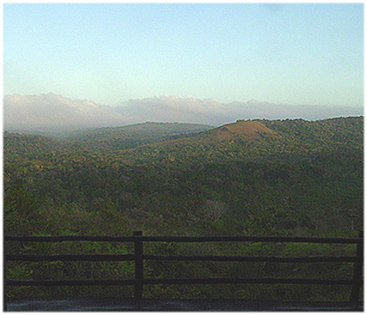
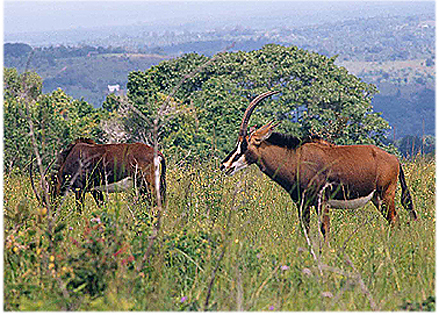
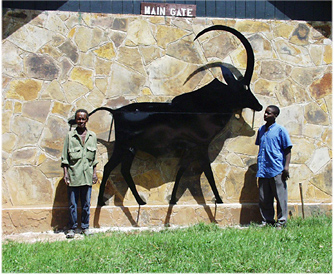
On
one occasion we choose the southern approach to Shimba
Hills and entered what
is now the Kidongo Gate. On the way there we
had to cross a deep stream near Manyatte
village driving over a “bridge” consisting of two steel I-beams placed
apart only. This was a scary experience not to be repeated ever after.
Once we made a memorable visit to Sheldrick’s Falls where we enjoyed cool and deep shadows after
a long walk there under beating and hot sunshine. We really had mulled
over whether to get out to the scorching sun having to return to our
cars.
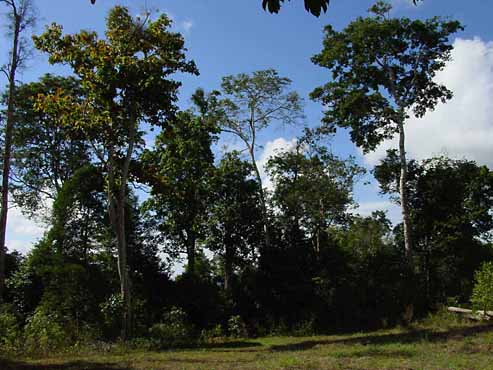
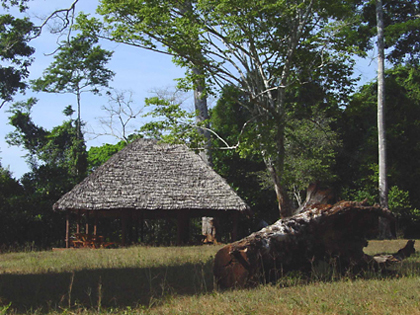
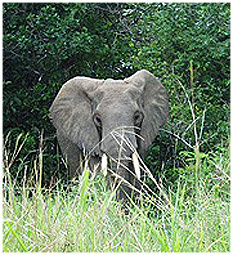
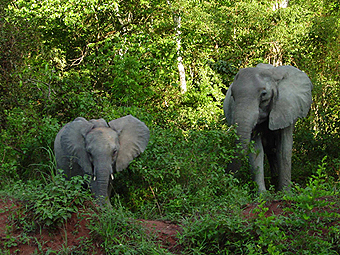
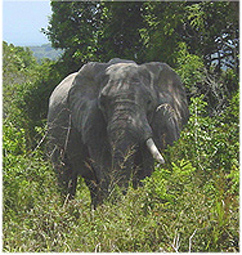
About the
Conservation Area
The
CONSERVATION AREA (comprising both the Shimba
Hills National Reserve and the Mwaluganje
Elephant Sanctuary) was officially announced in 1968. Since that time it
has been jointly managed by the Forestry Department and the authority of
National Wildlife Conservation that is known as the Kenya Wildlife
Service today. The Reserve covers about 250km² and its highest point is Pengo
Hill rising to some 500m above sea level.
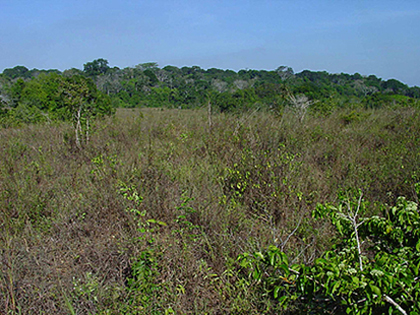
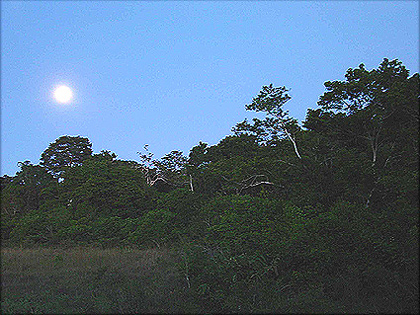
The
SHIMBA HILLS emerged as a part of the coastal ranges that emerge
intermittently along the East African littoral caused by a lifting
process during the Pliocene (between 2 and 10 million years ago). The
area is composed of sedimentary rocks of the Duruma
Sandstone series. The soil is classified as the Shimba
Grit and the Mazeras Sandstone from the
Upper Triassic Age (200 million years ago). The fertility status is poor
to very poor due to the sandy topsoil, low organic matter content and
excessive leaching. Generally they are low in all
available nutrients, and
critically deficient in phosphorus.
Therefore, the area is marginally agricultural land, and setting it
aside for wildlife and forest conservation would be practical and make
it more profitable.
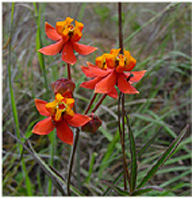
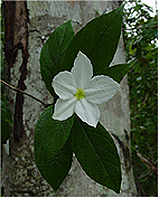
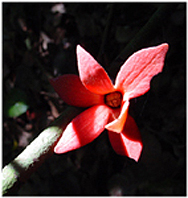
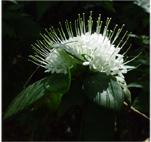
The
CLIMATE of the area is humid semi hot equatorial to dry semi hot
tropical and TEMPERATURES
range from about 19ºC to 36ºC. The coldest
months are July and August and
the hottest temperatures get to just before long rains break in February
and March. The northeast trade winds ("kaskazi")
dominate from November and March, and the southeasterly trade winds ("kuzi") take over from April through August. The
ANNUAL RAINFALL varies between 500 and 1,500mm. The wettest months last
from April to July, when over half of the total yearly rainfall falls.
The period from August to December
is moist, with a slight increase of rainfall in October/November. The
driest months are January and February. The mean relative HUMIDITY is
about 80%, except in the dry
season from January to March. Potential EVAPORATION varies with the
cloud cover, but is about 2,000 mm. Thus, except during the wet season,
the evaporation/transpiration exceeds the precipitation. There is an
annual average of SUNSHINE of 8.8 hours daily. The brightest month is
February, and the month with the least sunshine is May.
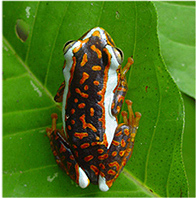
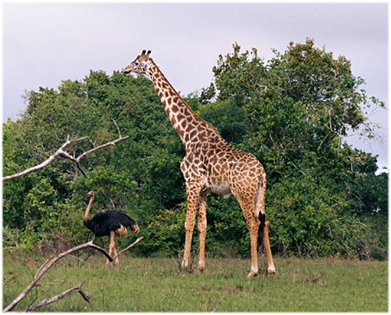
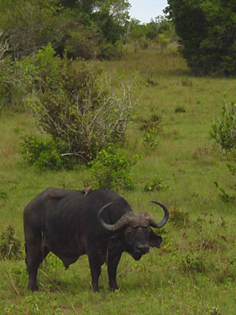
Various animals in Shimba Hills from left a frog, an ostrich and giraffe, and a rare buffalo in the local surrounding.
The
forested knoll known as Mwele Mdogo is in the south-western corner of the Shimba Hills National Reserve. Mwele Mdogo knoll was
used as a military stockade end observation post during time of some thirty-five
years. Several bloody end
violent actions were fought there, but today visitors may find it
difficult to visualize this when they picnic or bird watch in the shades
of one of
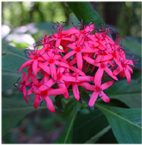
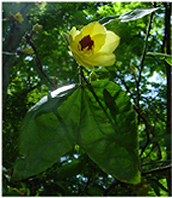
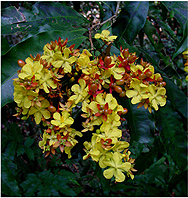
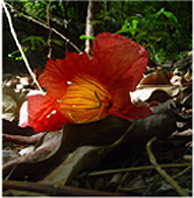
For a few years in
early 20th century Mwele Mdogo benefited from peace as the forest
undergrowth picked up. But not for too long when the British troops
refortified Mwele Mdogo
as the World War broke out in August 1914. Mburak
lived in exile in
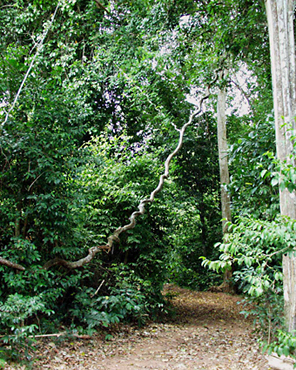
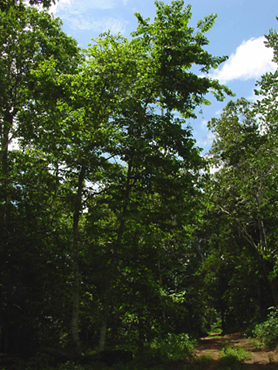
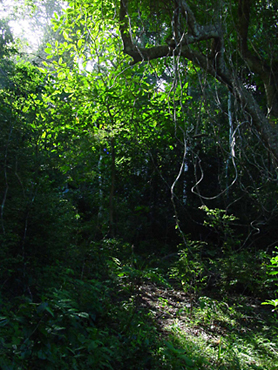
Now Mwele Mdogo is
covered with magnificent stands of tropical rainforest that conceals any
evidence of British military involvement here. Nevertheless, many
potsherds lie scattered on the forest floor and some almost undisturbed
hideout pits of Mburak’s followers could be
found during short walk through shrubs and trees disclosing signs of earlier conflicts.
About the
Animal Life in the Conservation Area
The recently established SHIMBA SUPPORT GROUP
(SSG) aims to enhance game viewing in the Reserve and to facilitate the
importation of new mammal species, mainly antelope such as Eland, Topi (alias Lyre antelope), Impala and Reedbuck.
The removal of some exotic plants a large chunk of territorial grassland
would allow better viewing of Sable antelopes. At present one finds some 25 mammals in the
Reserve among these Elephants and indigenous Sable and Shirran antelopes. The bird watchers counted about 66
birds species and the rare Palm Nut vulture. A number of butterflies some particularly big
ones found in forests and on grassland of the Shimba Hills.
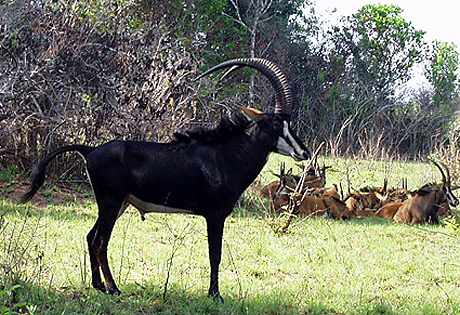
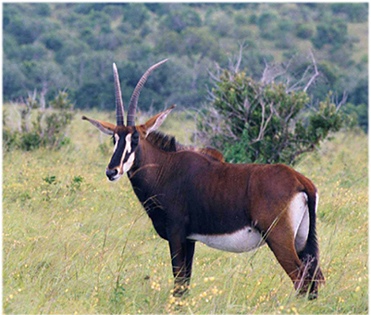
Shimba Hills are
probably the second richest place for butterflies in
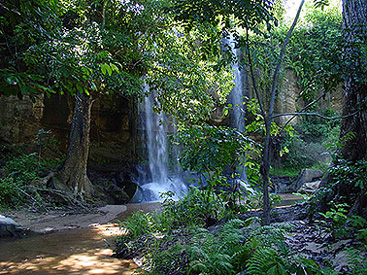
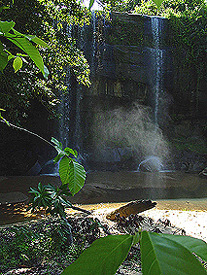
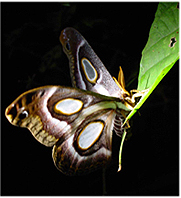
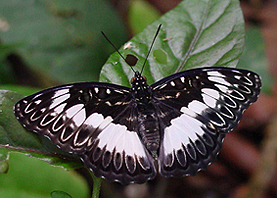
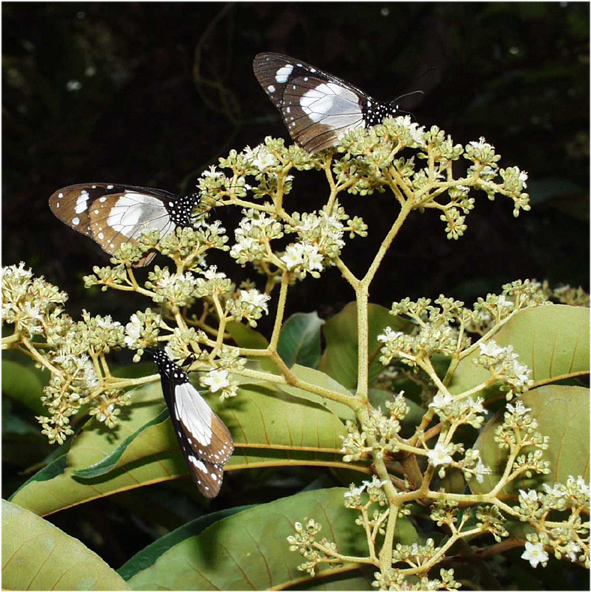
From left: Makadara Motte, Mwele Mdogo Butterfly and Papilio Dardanus on Psorospermum febrifugum.
The highlight of a
butterfly-spotting safari would be to stop at Makadara
Picnic Site. Walking along the forest road one would see “Coast Glider”
and Euptera, beautiful gliding butterflies
perched in forest’s sunny spots. The figs lying on the forest floor attract the
“Forester” butterflies sitting with their jewel-like wings open
alongside the roadside. Pengo Hill has a
special little orange “Yellow Zulu” living on the algae on exposed sun-facing
black granite rocks. Some of the local villagers, along the Reserve
periphery, have organized themselves to breed butterflies to pupae
~ ~ ~ ~ ~ ~
Epilogue
If you ever come to visit the South Coast of Mombasa do not miss to visit SHIMBA HILLS NATIONAL
RESERVE. You can acquire the SSG Membership too by contacting SHIMBA SUPPROTING GROUP c/o Baobab Trust,
Literature:
1. Karl-Wilhelm
Berger KENYA & NORDTANSANIA, Reisebuch; Iwanowski’s Reisebuchverlag -
Auflage 2000, ISBN
3-923975-25-2.
2. Newsletters No. 5
(May 2002), No.6 (August 2002) and No. 7 (December 2002). SHIMBA SUPPORT
GROUP c/o Baobab Trust,
3. For more
information and data see at URL: http://www.juliahailes.com and go
to web-pages titled <Background>,
<Objectives> and < Trustees>.
4. All photographs contributed Mrs. Sabine Baer, E-mail: Sabine.Baer@Bamburi.Lafarge.com .